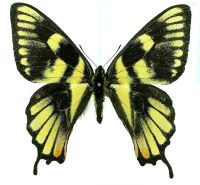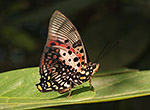-
cashew3344

- Posts: 3
- Joined: Thu Jul 03, 2025 12:05 pm
ŢℰMU promo Code £100 OFF → [ACW696499] for Existing Customers
by cashew3344 » Thu Jul 03, 2025 12:14 pm
We are excited to share that the "acw696499" ŢℰMU promo code is specifically tailored to provide maximum benefits for our valued customers in the United Kingdom and across various other European nations. This code is your key to unlocking substantial savings on a vast array of products available on the ŢℰMU platform.
Whether you're looking for fashion, home goods, electronics, or unique gifts, our ŢℰMU promo £100 off and ŢℰMU 100 off promo code will transform your shopping experience. Prepare to be amazed by the incredible deals you can snag this month!
What Is The promo Code For ŢℰMU £100 Off?
We're here to tell you that both new and existing customers can get amazing benefits if they use our £100 promo code on the ŢℰMU app and website. This ŢℰMU promo £100 off and £100 off ŢℰMU promo is a game-changer for anyone looking to save big. It's designed to maximize your savings and encourage smart shopping for new and regular users alike.
Here are some of the incredible offers you can unlock with our promo code acw696499:
acw696499: Enjoy a flat £100 off on your purchase, making your desired items more accessible than ever.
acw696499: Receive a £100 promo pack for multiple uses, allowing you to save on a series of purchases over time.
acw696499: New customers are greeted with a generous £100 flat discount, making your first ŢℰMU experience truly rewarding.
acw696499: Existing customers aren't left out, as this code provides an extra £100 promo code for continued savings.
acw696499: This £100 promo is specifically designed for our UK users, ensuring localized benefits and great deals.
ŢℰMU promo Code £100 Off For New Users In 2025
If you're a new user, you're in for a treat! New users can reap the highest benefits by using our promo code on the ŢℰMU app. Don't miss out on this ŢℰMU promo £100 off and ŢℰMU promo code £100 off opportunity. These offers are crafted to give you the best possible start to your ŢℰMU shopping journey.
Here are the exclusive offers for new customers:
acw696499: A flat £100 discount for new users, instantly reducing the cost of your inaugural order.
acw696499: A £100 promo bundle for new customers, providing a collection of discounts for various purchases.
acw696499: Up to £100 promo bundle for multiple uses, giving you sustained savings on your early shopping sprees.
acw696499: Enjoy free shipping all over Europe, making your new purchases even more convenient and cost-effective.
acw696499: Get an extra 30% off on any purchase for first-time users, sweetening the deal even further.
How To Redeem The ŢℰMU promo £100 off For New Customers?
Ready to start saving? Redeeming your ŢℰMU £100 promo is straightforward, and our ŢℰMU £100 off promo code for new users makes it incredibly easy to get those fantastic discounts. Just follow these simple steps to apply the code and watch your total drop!
Here's your step-by-step guide:
Download the ŢℰMU App or Visit the Website: If you haven't already, download the ŢℰMU app on your mobile device or navigate to the ŢℰMU website.
Create a New Account: Sign up for a new ŢℰMU account. This is essential to qualify for new user benefits.
Browse and Add to Cart: Explore ŢℰMU's extensive range of products and add all the items you wish to purchase to your shopping cart.
Proceed to Checkout: Once you're finished shopping, proceed to the checkout page.
Enter the promo Code: On the checkout page, you will find a designated field for "promo Code" or "Promo Code." Carefully enter the code acw696499 into this field.
Apply the Code: Click the "Apply" button next to the promo code field. You should see the £100 discount instantly reflected in your order total.
Complete Your Purchase: Finalize your order and enjoy your significant savings!
-
cashew3344

- Posts: 3
- Joined: Thu Jul 03, 2025 12:05 pm
ŢℰMU promo Code 100€ OFF → [ACW696499] for This Month
by cashew3344 » Thu Jul 03, 2025 12:12 pm
We've secured the "acw696499" ŢℰMU promo code, specifically designed to provide maximum benefits to our valued customers in European nations, including Germany, France, Italy, Switzerland, and many more. This special code is your ticket to making your budget stretch further while enjoying top-quality products. We are confident that you will find this offer incredibly valuable and easy to use.
Prepare to maximize your savings because with our special offers, you can easily access a ŢℰMU promo 100€ off and a ŢℰMU 100 off promo code. We are dedicated to helping you shop smarter and save more, ensuring you never miss out on the best deals available.
What Is The promo Code For ŢℰMU 100€ Off?
We are delighted to share that both new and existing customers can get amazing benefits if they use our 100€ promo code on the ŢℰMU app and website. This ŢℰMU promo 100€ off is designed to give you significant savings, making your shopping experience even more rewarding. It's truly a game-changer for anyone looking to save big, making the 100€ off ŢℰMU promo an absolute must-have. Here's how our exclusive code ACW696499 will empower your shopping:
ACW696499: Enjoy a flat 100€ off on your next ŢℰMU purchase.
ACW696499: Unlock a 100€ promo pack for multiple uses, ensuring you continue to save on future orders and explore more of ŢℰMU's fantastic offerings.
ACW696499: Receive a 100€ flat discount as a new customer, making your initial experience truly rewarding and setting the stage for smart shopping.
ACW696499: Access an extra 100€ promo code if you're an existing user, rewarding your loyalty and encouraging more fantastic finds on the platform.
ACW696499: Benefit from a 100€ promo exclusive to European users, guaranteeing maximum value and tailored savings right where you shop.
ŢℰMU promo Code 100€ Off For New Users In 2025
New users stand to gain the highest rewards with our ŢℰMU promo 100€ off. If you're just starting your ŢℰMU journey, this is your golden opportunity to make your first purchases incredibly cost-effective. Apply the ŢℰMU promo code 100€ off through the app to get the biggest perks available. We want your introduction to ŢℰMU to be as exciting and affordable as possible, and this code ensures just that:
ACW696499: Flat 100€ discount on your very first ŢℰMU purchase, making your initial experience a truly budget-friendly one.
ACW696499: Get a complete 100€ promo bundle for new customers, providing a generous array of discounts for your upcoming orders.
ACW696499: Unlock up to 100€ promo bundle for multiple uses, allowing you to spread your savings across various items and categories.
ACW696499: Enjoy free shipping all over European Nations, such as Germany, France, Italy, Switzerland, etc., eliminating extra costs and ensuring convenient delivery.
ACW696499: Grab an extra 30% off on any purchase for first-time users, piling on the discounts for an unbeatable deal.
How To Redeem The ŢℰMU promo 100€ off For New Customers?
Are you ready to dive into the world of savings with your ŢℰMU 100€ promo? Redeeming your ŢℰMU 100€ off promo code for new users is straightforward and quick. We've outlined the simple steps below to ensure you get your discount without any hassle. Just follow these instructions, and you'll be enjoying your savings in no time:
Download and Install the ŢℰMU App: If you haven't already, head to your device's app store (Google Play Store or Apple App Store) and download the official ŢℰMU app.
Register a New Account: Open the ŢℰMU app and sign up for a new account using your email address or mobile number. This is essential to qualify as a new user.
Browse and Add Items to Cart: Explore ŢℰMU's extensive range of products, from fashion to home goods, electronics, and more. Add all the items you wish to purchase to your shopping cart.
Proceed to Checkout: Once you're satisfied with your selections, tap on the cart icon and proceed to the checkout page.
Enter the promo Code: On the checkout page, you will find a designated field labeled "promo Code," "Promo Code," or "Apply Discount." Carefully enter the code ACW696499 into this field. Double-check for any typos to ensure it's entered correctly.
Apply the Code: Click on the "Apply" or "Redeem" button next to the promo code field.
See Your Discount: The 100€ discount will be instantly applied to your total order amount. You'll see the reduced price before you finalize your purchase.
Complete Your Purchase: Proceed with your preferred payment method to complete your order and enjoy your fantastic savings!
-
cashew3344

- Posts: 3
- Joined: Thu Jul 03, 2025 12:05 pm
ŢℰMU promo Code $100 Off [ACW696499] + 30% Discount For Existing Users
by cashew3344 » Thu Jul 03, 2025 12:10 pm
Our exclusive ŢℰMU promo code acw696499 is specifically crafted to provide maximum benefits for our valued users in the USA, Canada, and European nations. This fantastic code opens the door to significant savings on your favorite items, making it the perfect time to discover everything ŢℰMU has to offer. We believe everyone deserves access to great deals, and this code is our way of ensuring you get the best value.
By leveraging the power of our ŢℰMU promo $100 off and the highly sought-after ŢℰMU 100 off promo code, you're not just saving money; you're unlocking a world of affordable possibilities. We invite you to dive in and explore the incredible discounts waiting for you on ŢℰMU, transforming your shopping into a truly rewarding experience.
What Is The promo Code For ŢℰMU $100 Off?
We are excited to share that both new and existing customers can unlock amazing benefits if they utilize our ŢℰMU promo $100 off code on the ŢℰMU app and website. This special offer, often referred to as the $100 off ŢℰMU promo, is designed to provide substantial savings on a wide range of products, making your shopping experience more rewarding. We believe in offering value to all our users, whether you're a first-timer or a seasoned ŢℰMU shopper.
Here's how the acw696499 code empowers you with incredible savings:
acw696499: Enjoy a flat $100 off your purchase, instantly lowering the price of your chosen items.
acw696499: Receive a $100 promo pack designed for multiple uses, allowing you to save on various orders over time.
acw696499: New customers can take advantage of a generous $100 flat discount on their very first order, setting you up for fantastic initial savings.
acw696499: Existing customers can benefit from an extra $100 promo code, rewarding your loyalty with additional discounts.
acw696499: This $100 promo is specifically tailored for users in the USA and Canada, ensuring localized and relevant savings.
ŢℰMU promo Code $100 Off For New Users In 2025
New users, welcome aboard! You've come to the right place to experience amazing savings with the ŢℰMU promo $100 off this year. First-time buyers in 2025 can access unmatched deals using our trusted ŢℰMU promo code $100 off on the ŢℰMU app. We are dedicated to making your initial ŢℰMU experience incredibly rewarding, setting the stage for smart shopping habits.
Let's see how the acw696499 code benefits new users:
acw696499: As a new user, you're entitled to a fantastic flat $100 discount on your initial purchase, making your first order exceptionally affordable.
acw696499: Receive a special $100 promo bundle crafted specifically for new customers, offering savings across multiple items in your first few orders.
acw696499: Enjoy an up to $100 promo bundle that can be applied to various purchases, giving you flexibility in your savings as you explore ŢℰMU's vast selection.
acw696499: Benefit from free shipping to 68 countries on your first order, ensuring that your incredible savings aren't offset by delivery fees.
acw696499: Get an extra 30% off on any purchase you make as a first-time user, further enhancing your savings on top of the $100 discount.
How To Redeem The ŢℰMU promo $100 Off For New Customers?
Redeeming your ŢℰMU $100 promo and taking advantage of the ŢℰMU $100 off promo code for new users is a simple and straightforward process. We've made it incredibly easy for you to unlock these fantastic savings. Just follow these steps to apply the promo on the ŢℰMU platform:
Download the ŢℰMU App or Visit the Website: Begin by downloading the official ŢℰMU app on your mobile device (highly recommended for the best experience and app-exclusive offers) or by visiting the ŢℰMU website on your desktop browser.
Register a New Account: If you're a new user, sign up for a new ŢℰMU account using your email address or mobile number. This is a quick and easy process.
Browse and Add to Cart: Explore ŢℰMU's extensive range of products, from fashion and electronics to home goods and beauty products. Add all the items you wish to purchase to your shopping cart.
Proceed to Checkout: Once you're done shopping, proceed to your shopping cart and click on the "Checkout" or "Proceed to Checkout" button.
Locate the promo Code Field: On the checkout page, you will find a section or field labeled "Apply promo Code," "Promo Code," or "Discount Code." This is where you'll enter your exclusive code.
Enter the Code: Carefully type or paste the exclusive promo code acw696499 into the provided field.
Apply the Discount: After entering the code, click the "Apply" or "Redeem" button next to the promo code field. You will instantly see the $100 discount or the applied promo bundle reflected in your order total.
Complete Your Purchase: Review your order details and discount, then proceed with entering your shipping information and payment method to finalize your purchase and enjoy your incredible savings!
ŢℰMU promo $100 Off For Existing Customers
We value your continued loyalty to ŢℰMU, and we are delighted to inform you that existing users can also unlock remarkable benefits when they utilize our promo code on the ŢℰMU app. We believe in rewarding our loyal shoppers, and that's why we've ensured our offers extend beyond just new sign-ups. With the ŢℰMU $100 promo codes for existing users and the promise of ŢℰMU promo $100 off for existing customers free shipping, your continued shopping experience with ŢℰMU will be even more rewarding.
Here’s how the acw696499 code brings extra value to your existing ŢℰMU shopping:
acw696499: As a valued existing ŢℰMU user, you can receive a $100 extra discount on your purchases, making your favorite items even more affordable.
acw696499: Take advantage of a $100 promo bundle designed for multiple purchases, allowing you to save on various items over time as you restock or discover new products.
acw696499: Enjoy a free gift along with express shipping on your orders all over the USA/Canada, adding even more value to your shopping experience.
acw696499: Get an extra 30% off on top of any existing discounts or promotions, maximizing your savings potential on a wide range of products.
acw696499: Benefit from free shipping on your orders to any of the 68 countries we serve, ensuring convenient and cost-effective delivery.
How To Use The ŢℰMU promo Code $100 Off For Existing Customers?
Utilizing the ŢℰMU promo code $100 off and the ŢℰMU promo $100 off code as an existing customer is incredibly straightforward. We want to make sure your repeat purchases are just as exciting and cost-effective as your first. Follow these simple steps to ensure you redeem your well-deserved discount:
Open the ŢℰMU App or Website and Log In: Launch the ŢℰMU app on your mobile device or navigate to the official ŢℰMU website in your browser. Log in to your existing ŢℰMU account using your credentials.
Add Items to Your Cart: Browse through the vast selection of products available on ŢℰMU and add all the items you wish to purchase to your shopping cart.
Proceed to Checkout: Once you have finished selecting your items, click on the shopping cart icon and then proceed to the checkout page.
Find the promo Input Field: On the checkout summary page, look for a designated field or box where you can enter a promo, promo, or discount code. It might be labeled something like "Apply promo" or "Enter Promo Code."
Enter Your Code: Carefully enter or paste the promo code acw696499 into this field. Ensure there are no typos or extra spaces.
Click "Apply": After entering the code, click the "Apply" button located next to the input field. The discount provided by the acw696499 code will be instantly calculated and reflected in your order total.
Complete Your Purchase: Once you see the discount applied, review your order and then proceed to finalize your purchase by entering your shipping and payment details. Enjoy your savings!
-
boghaunter1

- Premium Member - 2025

- Posts: 298
- Joined: Mon May 23, 2022 7:16 pm
Re: Beautiful Ab. P. canadensis
by boghaunter1 » Wed Jul 02, 2025 9:15 pm
I just took this ab. P. canadensis off the spreading board today. Following are photos of the dorsal & ventral wing surfaces & a comparison to a "normal" fm. Canadian Tiger Swallowtail collected on the same date (30 May 2025) & location.
John K.
-
Chuck

- Posts: 1441
- Joined: Mon May 23, 2022 2:30 pm
Re: Tiger Swallowtails of NY: Finger Lakes, Part II
by Chuck » Wed Jul 02, 2025 5:42 pm
Now on to the MST (P. solstitius) season...
May and June in the Finger Lakes region of NY have been horrible. Storms, tornados, flooding, deaths. Over the past month, four freak days hit 90F (32C) which were terminated by thunderstorms. Four days were typical nice summer days. The rest were rainy, cold, and windy. What a garbage summer so far.
02 July 2025: 74F/ 23C, winds NW 8, 100% sun
Observed: zero
It's now the very beginning of MST (solstitius) season, typically. Being the first decent day, I checked the shoreline and side roads of Wayne Co. NY near Lake Ontario. Zero. iNat has observations in the Ithaca NY area, but not here. The preferred nectaring source, milkweed, is a good week from full bloom. I wonder...does the full bloom of milkweed with the emergence of MST coincide due to the same factors? Or does MST somehow "know", in real-time as if checking Weather Channel, it is too early to emerge and nectar, despite the calendar date?
-
wollastoni

- Site Admin

- Posts: 690
- Joined: Fri Mar 18, 2022 9:51 am
Papilio antimachus - female or male
by wollastoni » Wed Jul 02, 2025 11:46 am
Here are some recent live photos by Sui Fai Pun that clearly show the differences between males and females:
Female : Male : Pictures taken in June 2025 in Uganda.
Main differences :
- females have rounded forewings
- females lacks the three white spots on the underside.
Be careful, some fraudulent sellers “cut” the forewings of males to round them like those of females. The absence of white spots is therefore a better indicator. So always check the underside !
Here is an example of a fake female with cut wings : https://archive.insectnet.com/thread/63 ... hus-female
I hope it will help.
-
Dinosaur2004

- Posts: 2
- Joined: Sat Jun 28, 2025 10:42 am
Re: Any French guiana entomologist
by Dinosaur2004 » Wed Jul 02, 2025 10:04 am
I thought more of a hobby entomologist. I will be there at the end of July for 15 days in camp like 60km west from Cayenne
-
dogeared

- Posts: 2
- Joined: Mon Jun 30, 2025 4:51 pm
Re: ID help with strange scorpion thing
by dogeared » Mon Jun 30, 2025 6:28 pm
-
livingplanet3

- Premium Member - 2025

- Posts: 720
- Joined: Tue May 24, 2022 4:55 pm
Re: ID help with strange scorpion thing
by livingplanet3 » Mon Jun 30, 2025 5:43 pm
https://en.wikipedia.org/wiki/Heterotoma_planicornis
https://www.naturespot.org/species/hete ... lanicornis
-
dogeared

- Posts: 2
- Joined: Mon Jun 30, 2025 4:51 pm
ID help with strange scorpion thing
by dogeared » Mon Jun 30, 2025 5:11 pm
I've never seen anything like this before and can't identify it.
I was sitting outside here in Suffolk England, having a drink and it was there underneath my glass when I picked it up.
It has six green legs plus two 'claw like' structures that it was waving around, they had a fat part then short thin jointed extensions. No actual pincers. It appears to have a wing case. It was about 12mm long.
Thank you
https://photos.app.goo.gl/Zy9b9Ffr9ExxMxYe9
https://photos.app.goo.gl/7sHe7BzB6J88qsMt7
-
livingplanet3

- Premium Member - 2025

- Posts: 720
- Joined: Tue May 24, 2022 4:55 pm
Re: Need help IDing gifted butterfly
by livingplanet3 » Mon Jun 30, 2025 2:47 pm
Thank you for pointing this out. This likely means that many of the specimens that I've seen labeled as palinurus, including ones in my own collection, are actually probably daedalus.adamcotton wrote: Mon Jun 30, 2025 9:50 am No it isn't. This is Papilio daedalus from the Philippines, a closely related but separate species...
-
wollastoni

- Site Admin

- Posts: 690
- Joined: Fri Mar 18, 2022 9:51 am
Re: Any French guiana entomologist
by wollastoni » Mon Jun 30, 2025 12:00 pm
Welcome here.
The few French Guianan entomologists that I know are working on Amazonian species only. They already have so much work studying their own fauna. I doubt they will be interested in entomo pins or European insects.
When and where do you go inside French Guiana ?
I will be there in November (Kaw, Saul and Belizon on the program).
-
adamcotton

- Global Moderators

- Posts: 1118
- Joined: Tue Mar 22, 2022 12:24 pm
Re: Need help IDing gifted butterfly
by adamcotton » Mon Jun 30, 2025 9:50 am
No it isn't. This is Papilio daedalus from the Philippines, a closely related but separate species. Note on the hindwing that the green band points directly at the 'eye spot' at the anal angle of the hindwing (inner edge below the tip of the abdomen), whereas in Papilio palinurus the green band ends above the 'eye spot'. It seems that Wikipedia doesn't know that there are two separate species in their 'Papilio palinurus'.
This species is not protected and perfectly legal to own in the USA. Also it is worth mentioning that Papilio daedalus from the Philippines is the species often exhibited in butterfly houses. This species is bred in large numbers, whereas the true Papilio palinurus is not.
Adam.
-
livingplanet3

- Premium Member - 2025

- Posts: 720
- Joined: Tue May 24, 2022 4:55 pm
Re: Need help IDing gifted butterfly
by livingplanet3 » Mon Jun 30, 2025 4:17 am
Further info -
https://en.wikipedia.org/wiki/Papilio_palinurus
-
n73

- Posts: 1
- Joined: Mon Jun 30, 2025 2:14 am
Need help IDing gifted butterfly
by n73 » Mon Jun 30, 2025 2:55 am
I would like to ask for help with a specimen shown below. I was gifted it as a kid in the mid to late 2000s. It's about 4 or 5 inches (10 to 13 cm) across and did not come with any location/species info. Sorry about the hideous mounting; I didn't know any better and was just trying to keep it from being damaged by sliding around in the case.
Someone elsewhere on the internet suggested it may be Papilio palinurus. Is this ID correct? Also, can anyone advise (informally—not official legal advice I know) on whether I can own this legally in the US? I have done my homework before posting and it looks like P. palinurus is not CITES listed but is protected in Thailand and I of course have no idea where this particular specimen is from or whether there are other laws I need to be considering.
Thank you for reading!
n73
-
kevinkk

- Premium Member - 2025

- Posts: 536
- Joined: Mon May 23, 2022 5:06 pm
super speed pupa
by kevinkk » Sun Jun 29, 2025 3:42 pm
The first 21 larva were put into 2 different containers , they burrowed in as soon as they hit the substrate, which in itself is not something I have ever noticed, at least with other burrowing species.
Now- the weirdest part of all, is that after 5 days in the substrate, at room temperature, which is 72 at my house, all were fully formed pupa, and I
removed them from the substrate, the remaining larva are taking the time I normally associate with the time it takes for larva to form pupa, more
like 10 days. I've never experienced larva doing this.
Ok, I can see one logical possiblity, and that was that the larve were mature long enough in the sleeve wandering, that some of the time was used up.
Does that make any sense? But that wouldn't explain the remaining lethargic larva, or the reality that I looked for mature larva everyday.
-
Dinosaur2004

- Posts: 2
- Joined: Sat Jun 28, 2025 10:42 am
Any French guiana entomologist
by Dinosaur2004 » Sat Jun 28, 2025 11:44 am
-
boghaunter1

- Premium Member - 2025

- Posts: 298
- Joined: Mon May 23, 2022 7:16 pm
Re: Beautiful Ab. P. canadensis
by boghaunter1 » Fri Jun 27, 2025 6:26 pm
Thank you very much to everyone for your positive compliments on the recent LUCKY collection of this rare aberration. I wish that same luck would help in winning a lottery!..
By the way... in my area, the summer of 2024, was also a very hot, dry season with drought-like conditions interspersed with brief cooler temps & heavy sporadic rain showers. Remember, last year, all the smoke from massive forest fires in W. Canada drifting far S. into the USA, causing breathing problems for millions! When the larva of this aberrant would have pupated in July-August '24, temps, for many days, reached well above 30 C = 86 F, with a number of days exceeding 34 C = 94 F... certainly favorable environmental conditions that may have contributed to the '25 production of this interesting aberration (as outlined by Adam Cotton above).
John K.
-
kevinkk

- Premium Member - 2025

- Posts: 536
- Joined: Mon May 23, 2022 5:06 pm
Re: Beautiful Ab. P. canadensis
by kevinkk » Fri Jun 27, 2025 4:47 pm
-
Paul K

- Posts: 231
- Joined: Mon May 23, 2022 6:44 pm
Re: Beautiful Ab. P. canadensis
by Paul K » Fri Jun 27, 2025 2:39 pm
And what are the odds that such unique specimen has had developed a „blister” ?!
Congrats
